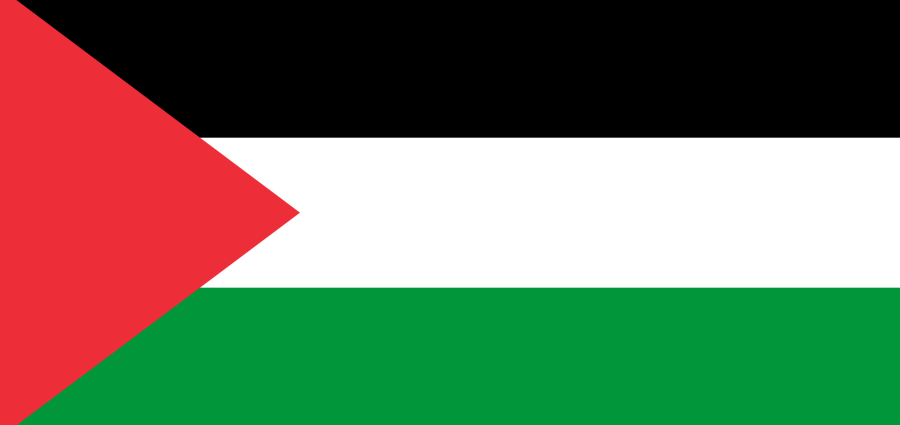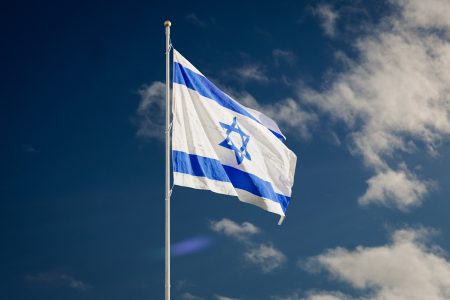An Arab population, essentially absent of a national consciousness prior to the twentieth century, forged a collective identity as the Palestinian people spurred conjointly by the forces of modernization and Zionism. The British mandate and policies of international actors also helped evoke a national consciousness in the Arab natives of Palestine, consequently forging the Palestinian identity in its nascent stages.
In the early twentieth century, economic grievances voiced by the peasantry at the village-level alerted the urban elite, who in turn began to imagine themselves as part of a distinct and separate community. These perceived economic cleavages consolidated the local Arab population, as urban elites expressed their views in the press, propagating the threats of Zionism. After World War II, Palestinian nationalism spread with compounding rapidity, permeating as a ubiquitous force through all channels of society. Persevering yet stateless in a tumultuous region, the Palestinians have further reinforced their identity around a particular focal point: their ongoing conflict with the state of Israel. As they continue their fight in splintered territories, the Palestinians exemplify the strong emergence of national consciousness in the absence of a nation-state.
The Palestinian case is deemed a model of a socially constructed identity. Some predominant scholars of nationalism such as Ernest Gellner and Eric Hobsbawm discount the primordialist perspective that identity markers are prescribed at birth, and instead maintain that ethnic attachment or membership is variable and contingent upon shifting personal interests. The Palestinian case supports their claim, as sociological factors such as environment, experience, and learned behaviors aided in forging their ethnic attachment. Hence, the Palestinian national character persists as an evolution constructed concomitantly by powerful historical measures and external forces. The term “Palestinian” used to reference an Arab ethnic category is a political construct which has been applied only since the twentieth century.
During the end of the Ottoman Empire, Jews began to immigrate to Palestine from various points in Europe, marking the beginning of the Zionist movement. Zionism advocates for the establishment of a Jewish homeland in the land of Palestine, derived from the religious reference tying the Jewish people to this particular land. The consecutive aliyahs (waves of Jewish immigration) from all points of the world added to the population of the pre-existing Jewish communities. As Jews in Diaspora experienced anti-Semitism abroad, they sought refuge in Palestine, further precipitating the need to establish a homeland. Arabs from neighboring regions also immigrated to Palestine from Ottoman rule henceforth. Migrations, in conjunction with a high birth rate, caused the Arab population to increase significantly.
The influx of Jewish immigrants began to change the demographic composition and societal structures of Palestine. This constituted a triggering event among the local Arabs as they began to recognize themselves distinct from the large number of arrivals who possessed a different religion, culture, and language. Furthermore, economic cleavages were created when the local Arabs, comprised of mostly illiterate agrarians, encountered Jewish immigrants arriving mostly from a more advanced society in Europe who brought with them skills and trades. This marked the nascent stages of a Palestinian national consciousness.
The British Mandate of Palestine was meant as a temporary solution to oversee and facilitate the welfare and progress of the population until the creation of a state. Under the British auspices, an unequal advancement between the Arab and Jewish communities ensued. Not only did the Jewish economy begin to develop while the Palestinian economy languished, but separate and unequal social and political institutions emerged. The British Mandate and the consequent immigration transformed the societal structures of Palestine. The British organized society according to a patronage system, conferring authority over internal affairs to a small group of elites in their respective Arab and Jewish communities. The British also revamped the previous arrangements regulating land ownership. Private property rights were not systematically embodied in standard legal structures during Ottoman Rule, allowing Jewish immigrants to obtain substantial swathes of land previously occupied by Arabs. The demand for land increased the value, enticing Arab landowners either residing on the land or living abroad to sell for quick profits. An economic depression in the 1930’s further accelerated transfer of land from Arabs to Jews, as impecunious Arabs were forced to sell from inability to pay taxes. The British failed to prevent such significant land transfers, relying on capital generated by Jewish immigration to sustain economic development.
The main causes of the erosion of Arab authority in terms of land ownership are attributed to weak institutional structures and the lack of national unity among the Palestinian Arabs. On the contrary, an independent Jewish political unit materialized under the Mandate government with strong institutions that a functioning, independent state would require. The Palestinians did not create a comparable centralized political structure, placing them in a disadvantaged position vis-à-vis the Jews.
Control over land proved a volatile issue and this perceived injustice helped ignite a collective awareness among the Palestinian Arabs. This contention initially emanated not from the elites, but from the base of society—the peasantry. As “absentee landlords” sold sizable tracts of land to Zionist settlers, large numbers of Arab peasant dwellers became displaced. Forced from their land, the peasantry was the first to experience what they considered suppression and infringement perpetrated by their Zionist occupiers. In response, the Arab peasants staged a series of riots, using violence to rebel against the Zionists. Their ongoing struggle and consequent uprisings brought these grievances to the attention of the urban elite, who subsequently began an organized effort to confront the Zionists. The depression of the 1930’s compelled many rural Arabs to relocate to the coastal cities, forging a new class of urban elite.
This class of literate urban elites in turn expressed their views in the press, promulgating the threats of Zionism and influencing political and cultural life. Anti-Zionist newspaper owners and editors exposed the problems inflicted on the local population by the increasing numbers of Jewish settlers. The owner of a prominent Arab-language newspaper, Al-Karmil, published compelling editorials portraying Zionism as an issue affecting all Palestinians, and thereby uniting them against a common threat. Another local newspaper, Filastin, forecasted that Jews will one day overshadow the Arab population and establish a Jewish state in Palestine if they are not contained. This constituted a rallying point for Palestinians. Newspapers in Cairo, Beirut, and Damascus reprinted these articles, sympathizing with the Palestinian plight. The press was an integral component in shaping attitudes toward the Zionist movement, and in effect forged a collectivity among the Palestinians, emboldening their sense of identity. Benedict Anderson in Imagined Communities explains how the spread of publications in vernaculars created an awareness of a wider community. Enabled by modernization, various vernaculars appeared in print, signaling that readers were a part of a wider audience and engendered a sense of belonging. The press had this effect on the Palestinians, consolidating the segmented population into a unit.
Along with anti-Zionist content, newspapers also highlighted the substandard circumstances of the peasantry. Articles publicized the inferior economic standard of the Palestinians in contrast to the Jews, as well as the exclusion of Arabs from jobs offered by Jewish employers. Elites used the press to air their grievances, citing economic deprivation of the Palestinians caused by the Jews to persuade the British to halt Jewish immigration. Some researchers allege that claims of economic hardship were exaggerated by elites to justify the creation of a Palestinian state, when in fact Palestinians benefited from the economic growth spurred by the Jewish economy during the Mandate period. Economic adversity was attributed instead to an agricultural depression and drought in the 1930’s and other external factors, not suppression by the Jews. Regardless of the reality, this perceived threat perpetuated by the Arab leaders and the press forged an identity around a common focal point.
The defeat of the Palestinians in the numerous wars and conflicts continues to define the Palestinian character. After subsequent Arab-Israeli wars and a series of futile peace negotiations, the Palestinians persist as a stateless people. The failure by the Palestinians to offer a unified front vis-à-vis the Jews is attributed to disjointed leadership, financial despair, and insufficient military capability. Challenging a stronger political authority that possessed organized leadership and sound institutional structures, the Palestinians operated at a disadvantage against an advanced force. Furthermore, the Zionists were effective in garnering international support of major world powers to help facilitate their cause, while the Palestinians had no steadfast allies. Despite larger numbers, the Palestinians failed to triumph over a force with a growing economy and organized structures, precipitating their demise.
In summary, the Arab majority in Palestine were predominantly illiterate farmers or herders living in an agrarian society prior to modernization. As part of an empire, these peoples lived undisturbed and unaware of a national consciousness. Waves of immigration by peoples possessing a distinct religion, language, and culture triggered an awareness that markedly separated the local Arabs from the Jewish immigrants. Hence, the influx of Jewish immigrants began to change the demographic composition and societal structures of Palestine, marking the nascent stages of a Palestinian national consciousness. Further stimulating a consciousness was a perceived economic deprivation perpetrated by the Jews, as spurred by elites and the press. A significant number of Jewish immigrants came from the educated middle-class of various European countries, bringing with them skills and trades. As the uneducated, agrarian Arabs encountered Jewish immigrants from a more advanced society in Europe, economic cleavages occurred. The British support and partiality toward the Jews further created an economic and educational divide between the two cultures. Although Arab and Jewish societies were experiencing two different trajectories, the forces of industrialization and urbanization increased the overall standard of living in Palestine, surpassing that of surrounding countries. Research suggests that the Arab population did indeed benefit from economic growth spurred by the Jewish economy, as a result attracting large numbers of Arabs from neighboring countries to Palestine. Therefore, some researchers allege that claims of economic hardship were exaggerated by elites and the press to mobilize the Palestinians against the Jews. Regardless of fact, the perception by the mass Palestinian audience that the Jewish presence placed them in an inferior position and thereby bereaving them of their equal share in society, helped to consolidate and mobilize them against this perceived threat. As they continue their fight in splintered territories, the Palestinians exemplify the emergence of national consciousness in the absence of a nation-state. The genesis of the Palestinian identity does not constitute a unique and distinctive case, but follows in similar trajectory of several occurrences that have come before and after it.








